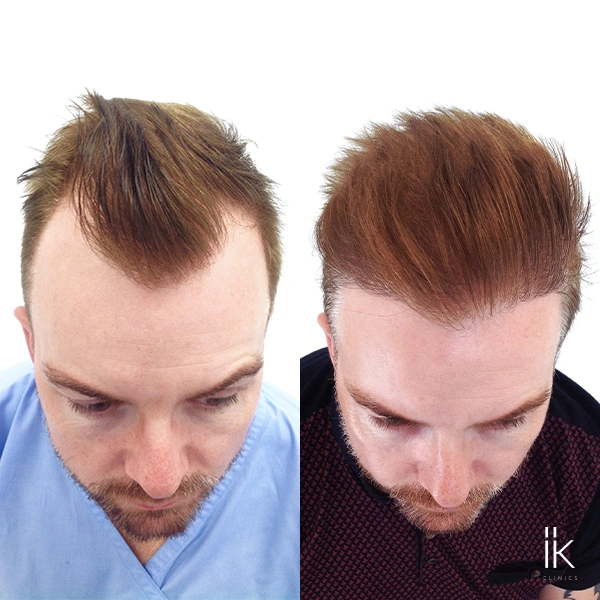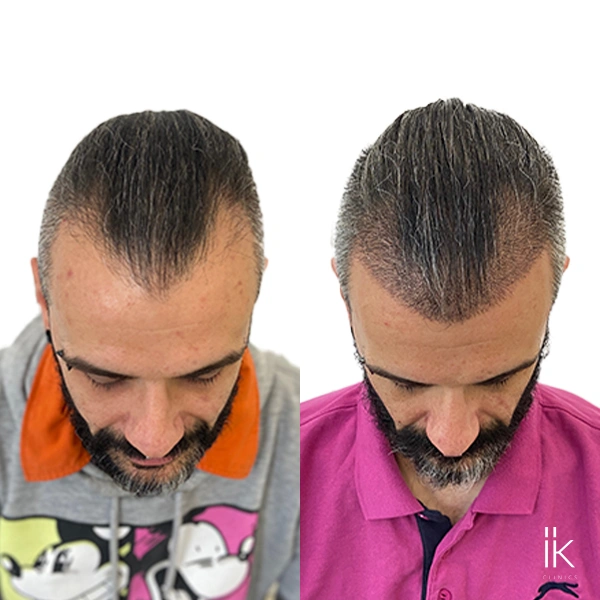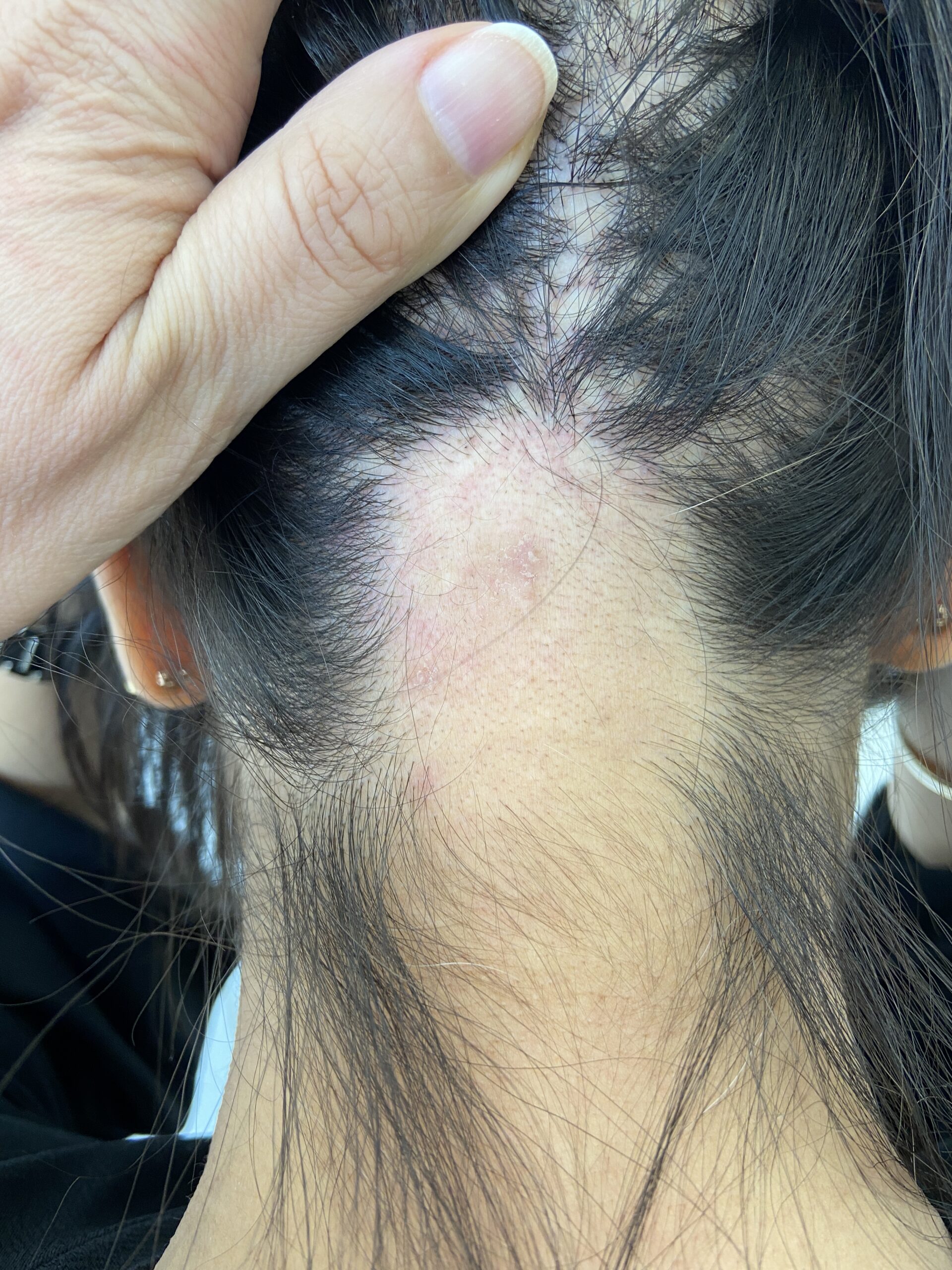The hair restoration industry has made significant strides in recent years, thanks to innovative technologies and an expanding understanding of hair loss mechanisms.
Today, people experiencing hair loss have more options than ever before, as treatments become less invasive, more effective, and increasingly personalised. New and emerging technologies are transforming the field, promising better results and reshaping the future of hair restoration.
Here, we explore some of these exciting developments and the potential impact they may have on the industry.
Robotic Hair Transplantation
One of the most promising advancements in hair restoration is robotic-assisted hair transplantation. Robots specifically designed for hair restoration procedures are capable of performing highly accurate follicular unit extractions (FUE).
With the help of artificial intelligence, these robots can identify and extract individual hair follicles with remarkable precision, ensuring natural-looking results.
The benefits of robotic hair transplantation are substantial. Robots can perform repetitive tasks with high precision, reducing the likelihood of human error and eliminating fatigue during long procedures.
This efficiency translates to shorter treatment times and faster recovery for patients. Robotic FUE makes hair transplantation more predictable and minimises downtime, making it a groundbreaking solution for those seeking hair restoration.
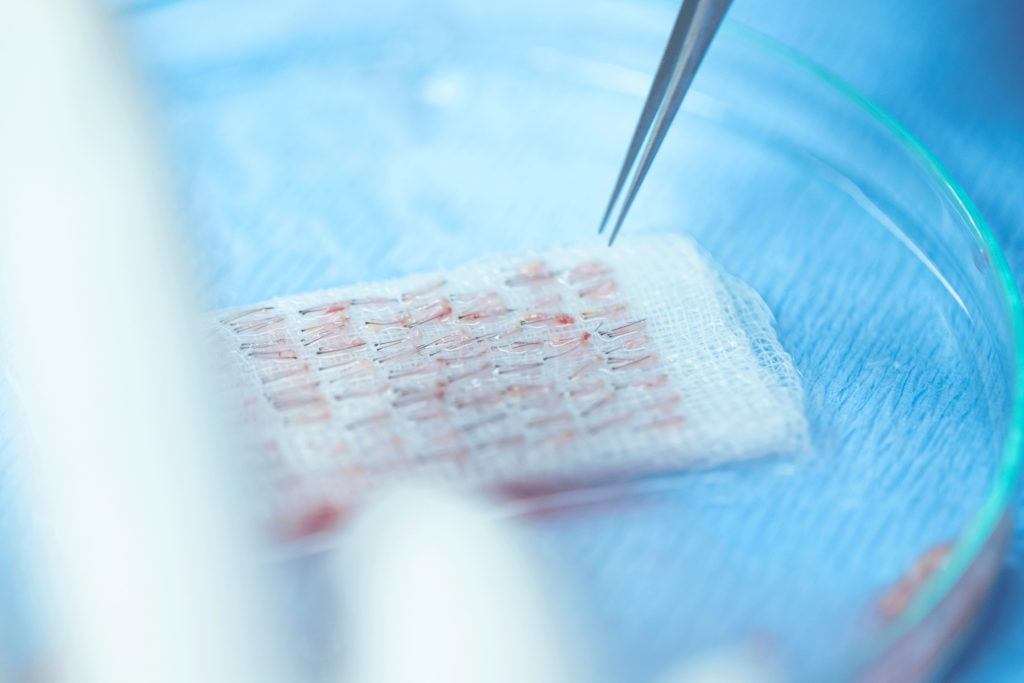
Stem Cell Therapy for Hair Growth
Stem cell therapy is another emerging technology that has gained popularity across the medical field, and it’s now making its way into hair restoration.
This therapy involves taking a patient’s own stem cells, typically from fat tissue, and injecting them into areas of the scalp experiencing hair loss. These stem cells stimulate dormant hair follicles, encouraging them to grow again.
Stem cell therapy offers an appealing, minimally invasive alternative to traditional hair transplants. Rather than moving hair follicles from one part of the scalp to another, this therapy works at a cellular level to revitalise hair growth.
While stem cell therapy is still being refined, early results show promise, with the potential for ongoing improvements over time. For patients, this means a natural treatment option that requires less downtime and fosters continuous hair growth.
Exosome Therapy: A New Approach to Hair Growth
Exosome therapy is another technology making waves in the hair restoration field. Exosomes are tiny vesicles, or pockets, that contain proteins, growth factors, and genetic material essential for cellular communication.
When injected into the scalp, exosomes promote hair follicle regeneration by stimulating growth at the cellular level.
While exosome therapy shares similarities with stem cell therapy, it focuses specifically on enhancing cell communication. Exosomes deliver growth factors that signal hair follicles to enter a growth phase, making this therapy particularly beneficial for people with thinning hair.
Though still relatively new, exosome therapy shows potential for slowing hair loss and encouraging fuller hair, making it a promising option for the future.
Enhanced Platelet-Rich Plasma (PRP) Treatments
Platelet-rich plasma (PRP) therapy has been a popular hair restoration method for several years. Traditionally, PRP involves drawing a patient’s blood, isolating the plasma rich in growth factors, and injecting it into the scalp to stimulate hair growth.
However, recent advancements have improved the effectiveness of PRP treatments, allowing for more precise application.
With new delivery systems and advanced injection techniques, PRP can now be applied more accurately, resulting in uniform hair growth with minimal discomfort. PRP’s regenerative qualities have long been recognised, and with these enhanced application methods, patients can see faster, more consistent results.
What’s more, this updated approach to PRP is an attractive choice for individuals seeking a natural, minimally invasive solution to restore volume and thickness to thinning areas.
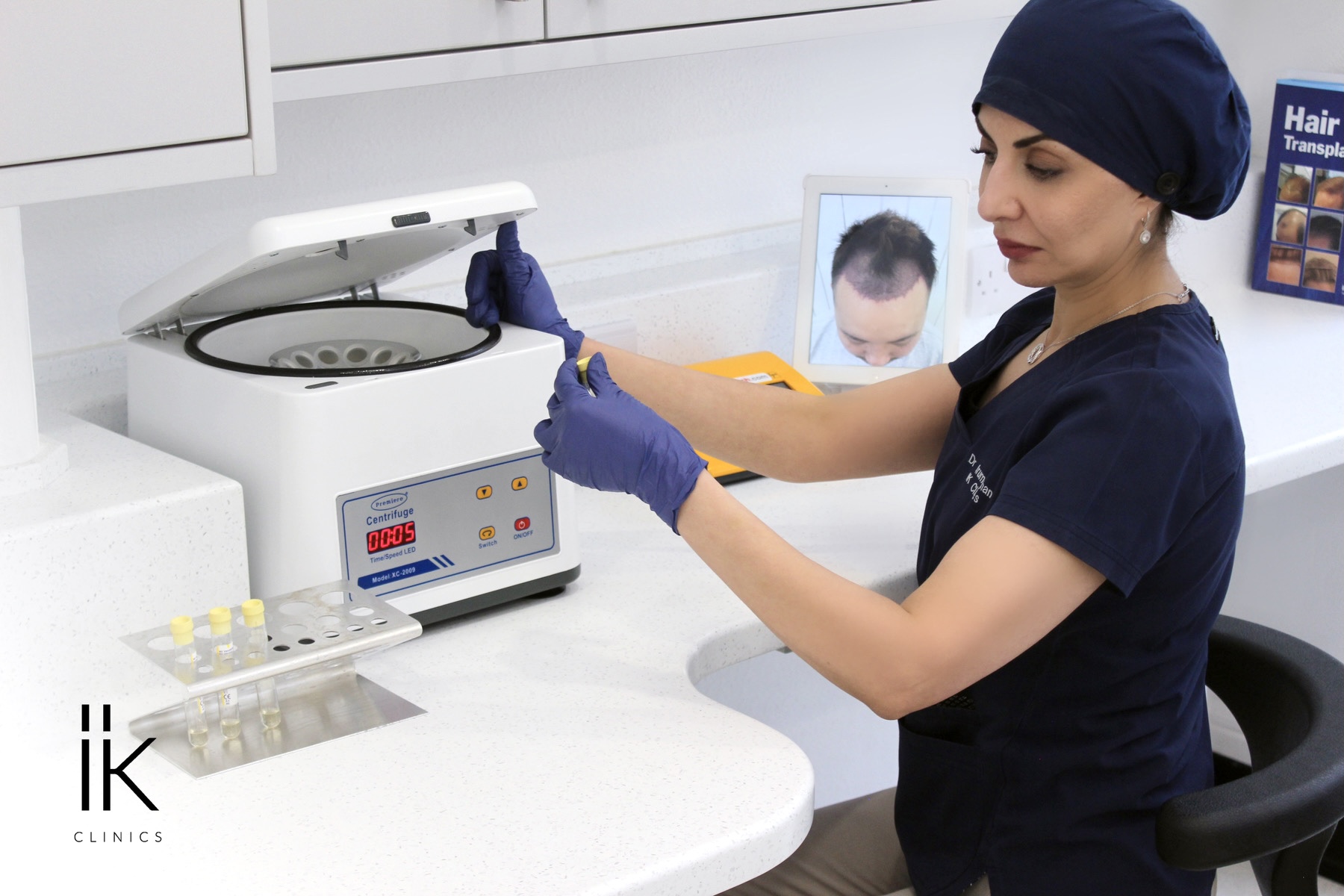
More Efficient Laser Hair Therapy
Low-level laser therapy (LLLT), also known as laser hair therapy, has been utilised in hair restoration for some time. LLLT devices emit photons that penetrate the scalp, promoting cellular activity and encouraging hair growth.
Previously, this therapy was only available in clinical settings, but advancements in technology have introduced portable, wearable devices that allow people to undergo treatment at home.
The new generation of LLLT devices is more efficient and user-friendly, with some equipped with tracking sensors that allow patients to monitor their progress.
This convenience means that patients can incorporate hair restoration into their daily routines, making it easier to maintain a consistent treatment schedule. With faster and more effective results, laser hair therapy is now more accessible than ever.
Personalised Treatment Plans Through Genetic Testing
One of the most transformative advancements in hair restoration is the use of genetic testing to create personalised treatment plans. Hair loss is often influenced by genetic factors, and understanding a patient’s genetic predisposition can help tailor treatments to their specific needs.
With genetic testing, practitioners can identify whether someone is more prone to pattern baldness or if other genetic factors are at play.
Armed with this information, clinics can craft highly individualised treatment plans that may combine therapies like medications, PRP, or stem cell therapy. For patients, this targeted approach addresses the underlying causes of their hair loss, leading to more predictable and often faster results.
Also, genetic testing allows those considering hair restoration to have realistic expectations, as treatments can be customised to their unique profiles.
3D Printing: The Future of Hair Transplants?
While still in the research phase, 3D printing holds the potential to revolutionise hair transplants. Scientists are exploring the possibility of creating 3D-printed hair follicles, which could one day be transplanted into patients.
This technology could address a common limitation of traditional hair transplants: the availability of donor hair.
For patients with advanced hair loss or those without enough donor hair, 3D-printed follicles could offer new options. Though not yet available, this development could redefine the field of hair transplantation, opening up possibilities for a wider range of patients who may not have qualified for traditional treatments.
The prospect of 3D-printed hair follicles is still emerging but holds exciting potential for the future.
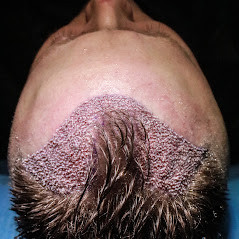
The Broader Impact on the Hair Restoration Industry
These emerging technologies are reshaping the hair restoration industry, creating a more dynamic, patient-centred approach to treatment.
For practitioners, such as our team at IK Clinics, these advancements provide a wider range of tools and techniques to address hair loss, while patients benefit from the availability of less invasive, more personalised options.
Minimally invasive options like stem cell and exosome therapies are expanding the range of possibilities for people who might have avoided traditional hair transplants. Home-based treatments, such as portable LLLT devices, allow for easier access to hair restoration, while genetic testing helps personalise treatment to deliver optimal results.
Innovations such as robotic FUE and, eventually, 3D-printed hair follicles, promise higher precision and quicker recovery, making hair restoration more predictable and appealing for a broader audience.
Final Thoughts
The introduction of these advanced technologies makes it an exciting time for hair restoration. For those considering treatments, the future offers a wealth of promising options.
Whether it’s the latest robotics in FUE, the regenerative potential of stem cell and exosome therapies, or the futuristic possibilities of 3D-printed follicles, these advancements are set to redefine how we can approach hair restoration, one strand at a time.
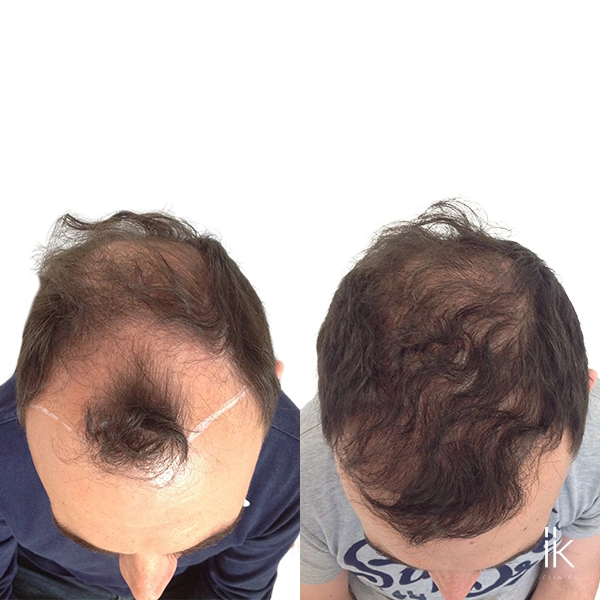
About IK Clinics
At IK Clinics, we are proud to stay at the forefront of global hair restoration trends, offering a variety of advanced techniques to meet the diverse needs of our clients. From FUE, PRP to Stem Cell Therapy, we ensure that every client’s treatment is tailored to their personal goals, helping them regain not just their hair but also their confidence.
Interestingly, we don’t just stop at hair restoration treatments, our highly skilled team also offers a range of anti-aging treatments.
